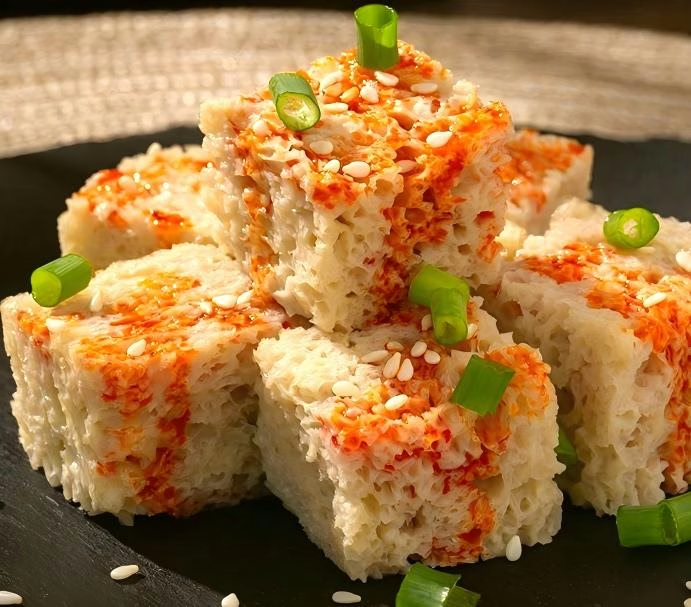Sesame gluten and gluten are quite common in vegetarian cuisine. Simply braised in a marinade, they absorb the rich broth and become a delicious side dish. But how are seitan and gluten made? Their appearance and taste are unique, thanks to an interesting secret in their production.
Do you need to wash the dough for seitan and gluten?
Sesame gluten and gluten are made from flour. Their chewy texture stems from the process of first making the dough and then washing it.
Sesame gluten is a dough made by kneading high-gluten flour and water. The dough is then soaked in water and repeatedly washed to develop its gluten strength. After fermentation, it is then rolled into small granules and fried, while gluten is steamed.
How can I increase its chewiness?
Washing gluten dough is done to increase its gluten strength. When kneading the dough, the process of adding flour and water to the dough develops its gluten strength. An additional step is required: repeatedly washing the dough with water. This washes away the starch in the dough, leaving behind the protein, which increases the protein content and improves the gluten strength. Fermentation then creates the gluten’s chewier texture.
Fermentation creates pores in the gluten, which then expands after frying. The resulting voids absorb broth, making gluten ideal for soupy dishes, providing a chewy texture and flavor. To create a gluten dish that goes well with rice, braise it with peanuts, soy sauce, and sugar, creating a peanut gluten dish that’s delicious with rice or porridge.
As for the refreshing braised bok choy or white radish, don’t forget to add a few pieces to the mix to add a touch of flavor to your vegetarian dish.
Roasted gluten: Wash the dough first, then steam it.
Next is roasted gluten, which has distinct pores on the surface and is steamed rather than fried. When making roasted gluten, the dough is washed with water, left to ferment, and finally steamed. Due to the fermentation and expansion, cracks develop inside the dough, so after cutting it into rectangular pieces, it’s usually baked or pan-fried before cooking.
Four Joys Roasted Gluten Recipe
Roasted gluten has many holes, similar to a sponge, making it ideal for braising with seasonal vegetables, creating vegetarian dishes like assorted roasted gluten. For example, Four Joys Roasted Gluten, a classic Jiangsu and Zhejiang cuisine dish, uses roasted gluten with black fungus, daylilies, peanuts, and shiitake mushrooms. First, ginger is sautéed, then the ingredients are stir-fried. Then, soy sauce, oyster sauce, rock sugar, and water are added and simmered. Finally, the roasted gluten and peanuts are added and mixed. This dish can be enjoyed hot, but even better when served cold. It’s a dish that’s accessible to both vegetarians and non-vegetarians.
Calorie Content
Despite being fried, gluten is higher in calories than roasted gluten, containing approximately 640 calories per 100 grams. This calorie content increases further after being braised and absorbed into the broth. Gluten lovers should be mindful of portion size.


Leave a Reply